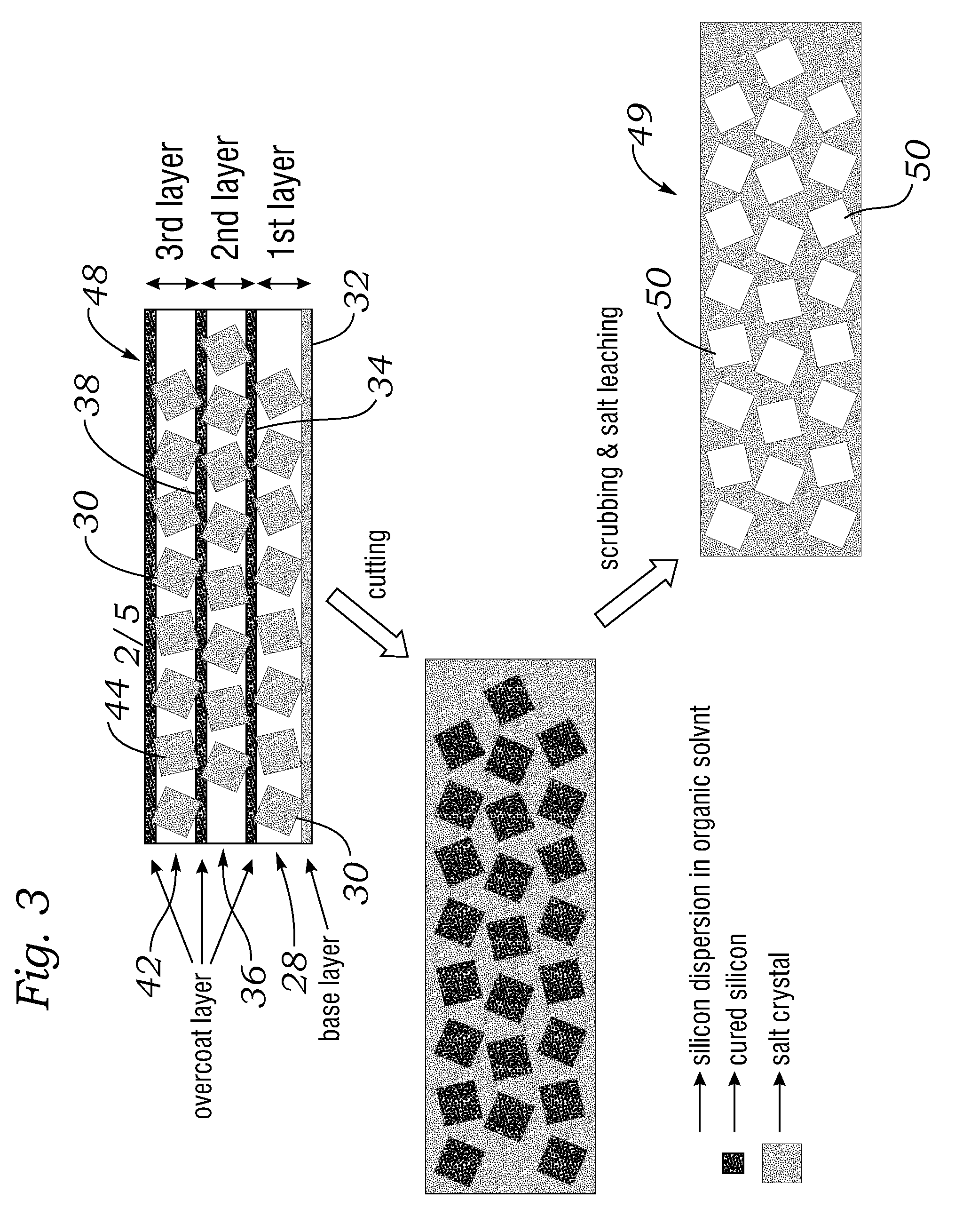Implants and methods for manufacturing same
a technology for implants and manufacturing methods, applied in the field of implants, can solve the problems of complex capsular contracture problems, inability to fully understand the reasons for capsular contraction, and the pain of implants, and achieve the effect of reducing the incidence of capsular contraction
- Summary
- Abstract
- Description
- Claims
- Application Information
AI Technical Summary
Benefits of technology
Problems solved by technology
Method used
Image
Examples
example 1
Preparation of Silicone Foam Coated Elastomers Using Layering and a Single Salt Crystal Type Technique
[0066]Silicone foam coated elastomers are prepared using a salt multi-layer technique in accordance with the invention. In this approach each pore is formed by salt crystals and therefore the pore shape and size is generally defined by the shape and size of the salt crystal used. One type of crystals appropriate for this application is cubic, such that the edges of each crystal can come in physical contact with neighboring crystals forming interconnections. Other types can be also used, e.g. round, elongated or even fused crystals of more complex geometry.
[0067]A thin base layer (tack layer) is first applied on top of the elastomer of interest, to provide adhesion. That layer is a low viscosity silicone dispersion (e.g. polydimethylsiloxane, polydiphenylsiloxane, etc.) in an organic solvent (e.g. xylene). The layer is allowed to evaporate most of the solvent off.
[0068]Salt crystals ...
example 2
Preparation of Silicone Foam Coated Elastomers Using a Dual Salt Crystal Type Technique
[0076]FIG. 6 illustrates another method in accordance with the present invention. This method may be identical to the method described in Example 1, with the exception that smaller crystals are also used to enhance the contact area between the large crystals, thus forming more and bigger interconnections. The smaller crystals can have a round, square or more complex geometry. The ratio of large to small crystals can vary, based on the geometry. If the large crystals are round, a theoretical maximum packing density will be about n / √18≈=0.74, and the mixing ratio about 3:1 or higher (large:small crystals). If the large crystals are cubic, the theoretical maximum packing density will be 1 and typically a minimum amount of small crystals will be required.
example 3
Preparation of Silicone Foam Coated Elastomers Using a Single Salt Crystal Type Emulsion Technique
[0077]FIG. 7 illustrates yet another method in accordance with the present invention. In this approach, the technique described in Example 2 is modified to replace the smaller crystals with stabilized water droplets. The advantage of this substitution is that the water droplets can selectively wet neighboring large crystals, dissolving part of the salt and reshaping it into a bridge that connects the neighboring crystals. Emulsion techniques can be used to stabilize water droplets in organic solvents, using surfactants (monoalkyl or dialkyl ampliphilic molecules). The stabilized water droplets can be added to the silicone dispersion, the base layer, the overcoat layer or any combination of those three.
PUM
| Property | Measurement | Unit |
|---|---|---|
| particle size distribution | aaaaa | aaaaa |
| particle size distribution | aaaaa | aaaaa |
| particle size distribution | aaaaa | aaaaa |
Abstract
Description
Claims
Application Information
 Login to View More
Login to View More - R&D
- Intellectual Property
- Life Sciences
- Materials
- Tech Scout
- Unparalleled Data Quality
- Higher Quality Content
- 60% Fewer Hallucinations
Browse by: Latest US Patents, China's latest patents, Technical Efficacy Thesaurus, Application Domain, Technology Topic, Popular Technical Reports.
© 2025 PatSnap. All rights reserved.Legal|Privacy policy|Modern Slavery Act Transparency Statement|Sitemap|About US| Contact US: help@patsnap.com



